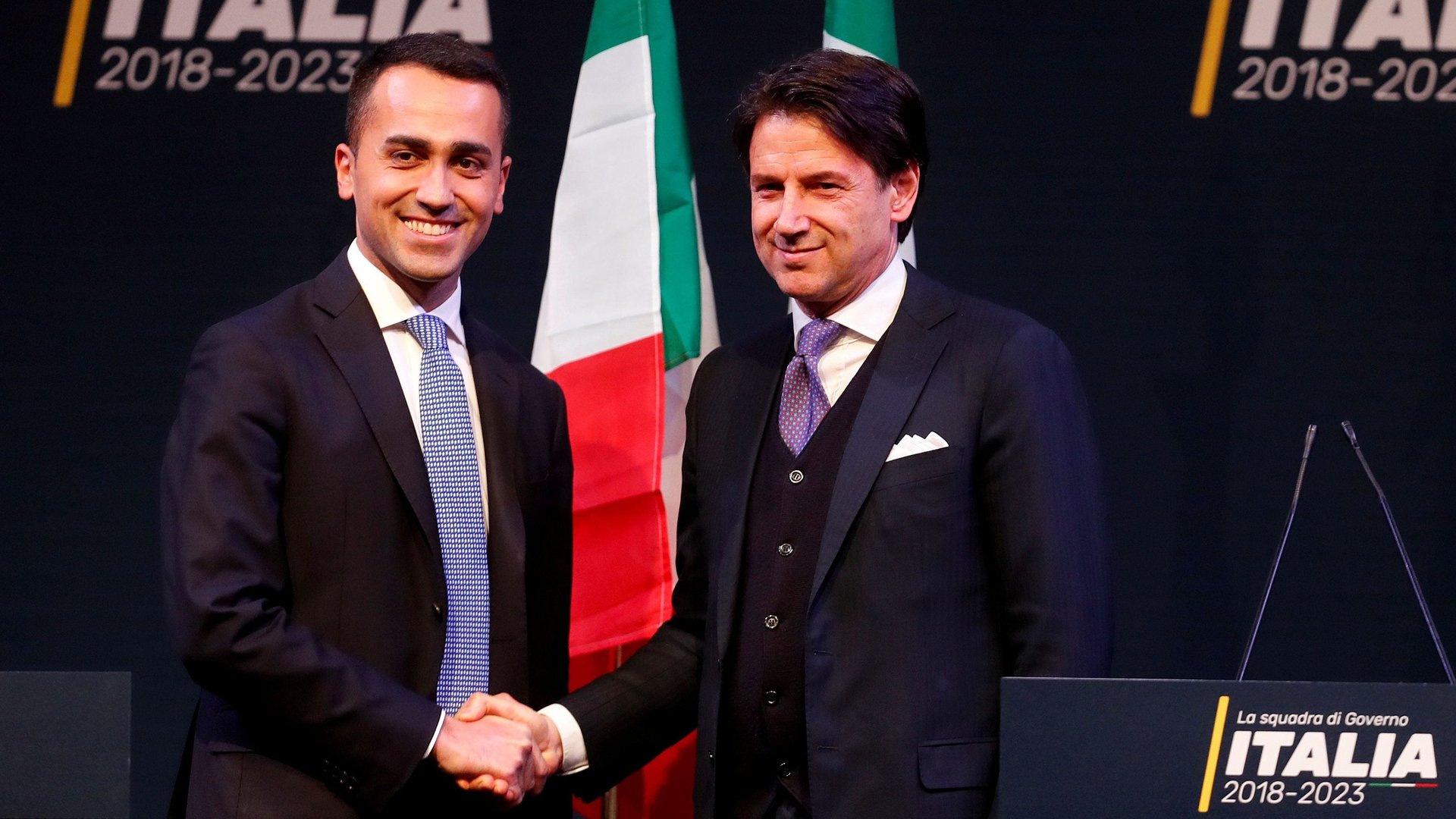Italy’s new “political government” will be a technical government, minus the expertise
It took two and a half months, but the “ultimate dream” scenario Steve Bannon had hoped for is finally a reality: Italy is all set to have a coalition government led by the Five Star Movement with the Northern League, two parties that ran on right-wing, populist, xenophobic, and anti-European agendas.


It took two and a half months, but the “ultimate dream” scenario Steve Bannon had hoped for is finally a reality: Italy is all set to have a coalition government led by the Five Star Movement with the Northern League, two parties that ran on right-wing, populist, xenophobic, and anti-European agendas.
Luigi Di Maio and Matteo Salvini, leaders of the two groups, have agreed on a government plan (a “government contract,” as they called it) which will try and deliver their many electoral promises. From anti-immigration policies, to tax cuts for the wealthy, overall it looks like the most right-wing program Italy’s had in decades. Civil law professor Giuseppe Conte—known to Italians for defending the creators of a sham stem cell treatment administered on a terminally ill child—has been named to be prime minister.
The groups have been clear that this is a “political government”—as opposed to the “technical governments,” staffed with career politicians, rather than professors or longtime professionals of the areas they represent in the government, that they, and particularly the Five Star Movement, have heavily criticized in past administrations.
In classic Italian fashion, however, everything changed so that everything could stay the same: Political governments are the new technical governments, and contracts are the new coalitions.
Let’s take a step back to the 2013 elections when Matteo Renzi was the young new face of Italian politics. He was mayor of Florence, and was against the old Italian political habit of collecting offices. While he did not run for parliament, he did run to become the leader of the democratic party. Once he won that position, he guaranteed his support to the technical government led by Enrico Letta.
But only a few weeks later, while still technically mayor, Renzi turned on Letta and was named prime minister of a coalition government. One can see why Italians may be disappointed, and why the opposition, and especially the Five Star Movement, would harshly attack Renzi. It was not only because his coalition government was with the center right and one of Silvio Berlusconi’s minions, but Renzi himself had not even been voted in parliament (something that is perfectly acceptable within Italy’s constitution).
These became leitmotifs of the Five Star opposition, and informed the 2018 platform: They would reject any coalition or technical governments, and only govern with a full majority, and voters would know that the prime minister was “elected” (though the prime minister remains named by the majority parties, not voted).
They promised change, and it worked when it came to election day. The movement evolved into becoming Italy’s main party, albeit not quite big enough to govern on its own. And so it took two months, but it now has its own coalition government with a party whose ideas at one point they deemed irreconcilable with theirs.
The chosen prime minister, true to script, was not voted into parliament in the March elections.
This government, despite its rebranding, is reminiscent of the past. Think of the coalition, referred to as yellow-green (the colors of the two groups), and their compromise program, the “government contract (link in Italian)”—it sounds eerily similar to Berlusconi’s “contract with the Italians.”
To mark a change, the actual leaders assured Italians that this will be a “political government”—but looking at it closely, it doesn’t look too different from their despised technical governments, albeit with no expertise. Conte is a the perfect exemplification of this: A professor, he has the shell of a technocrat, without any substance—only a day after his name was circulated, allegations that he lied on his résumé about a New York University degree emerged.
Replace the technocrats with politicians who rode their inexperience all the way to the government and you get the latest iteration of Italian politics as usual—the anti-establishment is now establishment, it’s just more right-wing, more xenophobic, and without much knowledge.